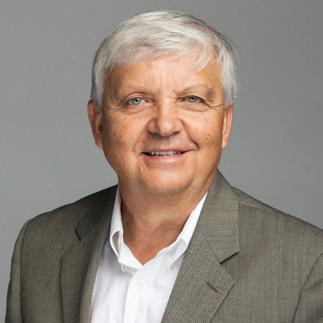
3 minute read
Million-mile’ battery Single crystal Ni-containing cathodes
A NEW CRYSTAL CLEAR SOLUTION INNOVATION THAT WILL DRIVE ELECTRIC VEHICLES TO GREATER LENGTHS
When asked about the origin of the ‘million-mile’ battery term, Dahn says, “This just kind of fell out of our work. We published a paper, and one sentence of the abstract said, ‘we show that batteries like this could power electric vehicles for a million miles’. That captured the imagination of the media.” Overcoming range anxiety is high on the agenda of electric vehicle manufacturers and battery developers. Professor Jeff Dahn from Dalhousie University and his team in the Department of Physics & Atmospheric Science in Nova Scotia, Canada, have been working on breakthrough single crystal “Our goal is to help lower the cost, increase the energy density and improve the lifetime of Li-ion cells,” says Jeff, who has been recognised as one of the pioneering developers of lithium-ion batteries now used worldwide in laptop computers and cell-phones.
Through laboratory testing, they have demonstrated how single crystal technology in Ni-containing cathodes withstands the microcracking that results with typical electrode materials.
Dahn explains, “Typical cathode particles are generally oriented in sort of random directions. During cycling, when lithium is repeatedly inserted between layers of cathode and then extracted, volume changes. And this change is not the same in all directions. The changes in the direction perpendicular to the layers are large.
technology that is proving to be a promising solution to this challenge.
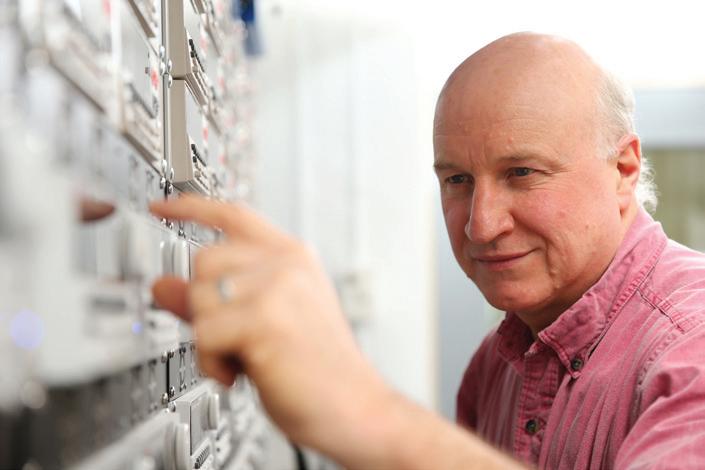
So, if two primary particles touch, this volume mismatch takes place and that can lead to microcracking of the particle into many small pieces. Consequently, you lose electric contact and start to lose access to cathode’s active mass through that process.”
“A single crystal particle, by contrast, is one crystallite that might be a two to three-micron particle. That’s an entire single crystal where there are no grain boundaries at all, so the whole thing expands and contracts as a unit. That means maintaining an electric connection to these particles as they expand and contract is relatively easy to do. Using a single crystal allows you to maintain a 100% connection to the cathode’s active mass throughout the charge-discharge cycling. It’s quite exciting.”
The team from Dalhousie is working on various single crystal nickelcontaining cathodes which have the advantage of tolerating extensive cycling and at the same time benefit from high energy density. Dahn and his team published a paper in the Journal of The Electrochemical Society, where he concludes “that cells of this type should be able to power an electric vehicle for over 1.6 million kilometres (1 million miles) and last at least two decades in grid energy storage.”
20 year life span
The good news is that this would enable electric car battery packs to last as long as the electric car it powers. Furthermore, switching to single crystal does not add to the cost notably.
“When we make single crystals in our lab, all we are doing is changing a little on the precursor side then heat treating to a slightly higher temperature to grow the single crystals. There is nothing fundamentally different about the whole synthesis process.”
The ultimate prize is the ‘million-mile’ battery.
“It goes to show that there is value in running tests for a very long duration. The cells that are highlighted in this million-mile battery paper, some of them are still on test. I was looking at them the other day. More than three years of running, the room temperature cells are out now to about 9500 cycles (which is well above a million miles of driving) with less than 10 per cent loss, so they are pretty incredible. (A, a), SEM images of a commercial single crystal Li[Ni0.5Mn0.3Co0.2]O2 (NMC532) (called SC-532) material with large grain size of ~3 μm 1.
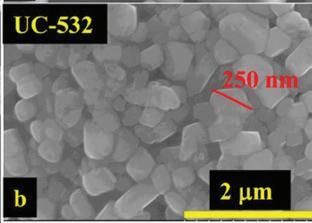
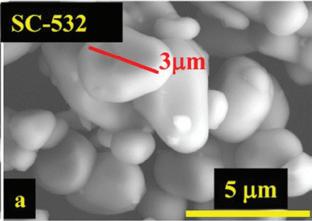

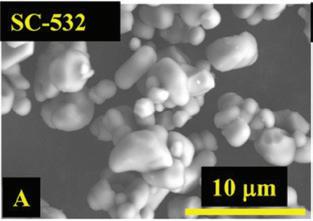
(B, b) SEM images of commercial polycrystalline (NMC532) without coating (UC-532) 1.
1. Li J., Cameron A. R., Li H., Glazier S., Xiong D., Chatzidakis M., Allen J., Botton G. A. and Dahn J. R. 2017 J. Electrochem. Soc. 164 1534

